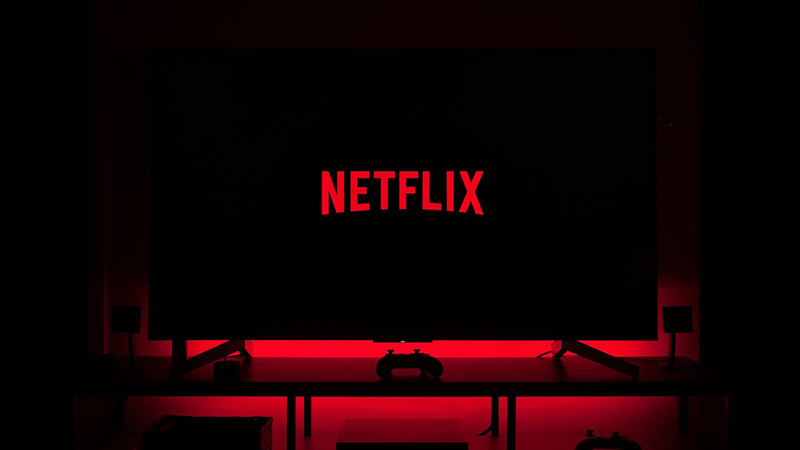Netflix has undoubtedly established itself as the dominant force in the streaming industry, revolutionising the way we consume entertainment.
Its pioneering efforts in offering a vast library of on-demand content have disrupted traditional television and paved the way for a new era of streaming.
Jason Higgs, the Senior Deals Strategist at Bountii, explores the most cost-effective and least cost-effective countries for Netflix subscriptions, examining the factors behind these price differences and their impact on global markets.
The data provided highlights the stark contrast in the cost-effectiveness of Netflix subscriptions across different countries. Several factors contribute to this disparity.
Top 10 most cost-effective countries for Netflix basic plans
|
Country |
Price (Local) |
Price (USD) |
No. of TV Shows |
No. of Movies |
Total Library Size |
Price per Title |
|
Pakistan |
450 PKR |
1.63 |
2,567 |
3,838 |
6,405 |
0.00025 |
|
Egypt |
70 EGP |
2.27 |
2,362 |
3,856 |
6,218 |
0.00036 |
|
India |
199 INR |
2.39 |
2,591 |
3,887 |
6,478 |
0.00037 |
|
Morocco |
35 MAD |
3.41 |
2,269 |
3,884 |
6,153 |
0.00055 |
|
Turkey |
99.99 TRY |
3.57 |
2,215 |
3,656 |
5,871 |
0.00061 |
|
Algeria |
3.99 USD |
3.99 |
2,265 |
4,013 |
6,278 |
0.00064 |
|
Tunisia |
3.99 USD |
3.99 |
2,266 |
3,941 |
6,207 |
0.00064 |
|
Lebanon |
3.99 USD |
3.99 |
2,277 |
3,850 |
6,127 |
0.00065 |
|
Indonesia |
65,000 IDR |
4.1 |
2,232 |
4,352 |
6,584 |
0.00062 |
|
Philippines |
249 PHP |
4.39 |
2,720 |
4,445 |
7,165 |
0.00061 |
Table shows the 10 most cost-effective countries for a Netflix subscription, based on price paid per title.
Most Cost-Effective Countries
Countries like Pakistan, Egypt, India, Morocco, and Turkey stand out as the most cost-effective markets for Netflix’s basic plans due to a number of reasons.
Lower Pricing Strategy
Netflix offers significantly lower subscription prices in these developing economies, aligning with the lower purchasing power and average income levels.
For instance, the basic plan in Pakistan costs just $1.63 per month.
Favourable Exchange Rates
The local currencies in these countries have lower values against the US dollar, making the subscription fees more affordable when converted to local pricing.
Content Licensing Costs
Netflix may have lower content acquisition costs in these regions, allowing them to offer more competitive pricing.
Market Competition
The presence of fewer local streaming rivals enables Netflix to maintain lower pricing without significant competitive pressure.
Top 10 least cost-effective countries for Netflix basic plans
|
Country |
Price (Local) |
Price (USD) |
No. of TV Shows |
No. of Movies |
Total Library Size |
Price per Title |
|
Liechtenstein |
11.9 CHF |
13.34 |
2,480 |
4,033 |
6,513 |
0.00205 |
|
Switzerland |
11.9 CHF |
13.34 |
2,314 |
4,556 |
6,870 |
0.00194 |
|
Guernsey |
7.99 GBP |
9.7 |
1,285 |
627 |
1,912 |
0.00507 |
|
Uganda |
3.99 USD |
3.99 |
776 |
461 |
1,237 |
0.00323 |
|
Seychelles |
3.99 USD |
3.99 |
848 |
550 |
1,398 |
0.00285 |
|
Côte d’Ivoire |
3.99 USD |
3.99 |
1,241 |
729 |
1,970 |
0.00203 |
|
Cape Verde |
3.99 USD |
3.99 |
1,245 |
729 |
1,974 |
0.00202 |
|
Equatorial Guinea |
3.99 USD |
3.99 |
1,315 |
727 |
2,042 |
0.00195 |
|
Mozambique |
3.99 USD |
3.99 |
1,286 |
763 |
2,049 |
0.00195 |
|
Fiji |
3.99 USD |
3.99 |
1,363 |
696 |
2,059 |
0.00194 |
Table shows the 10 least cost-effective countries for a Netflix subscription, based on price paid per title.
Least Cost-Effective Countries
On the other hand, countries like Liechtenstein, Switzerland, Guernsey, and several African nations rank among the least cost-effective markets due to several factors.
Higher Pricing Strategy
Netflix charges premium subscription fees in affluent nations like Liechtenstein and Switzerland, where the basic plan costs around $13.34 per month.
This aligns with the higher purchasing power and income levels in these countries.
Smaller Content Libraries
Some countries like Guernsey have relatively smaller Netflix content libraries (1,912 titles), resulting in a higher cost per title despite lower subscription fees.
Regulatory Factors
Certain regulations or licensing requirements in specific regions may increase Netflix’s operational costs, leading to higher subscription pricing.
Market Dynamics
The presence of strong local streaming competitors in some markets may force Netflix to adopt higher pricing strategies to maintain profitability.
Factors Influencing Pricing
Several factors influence Netflix’s regional pricing strategies.
For one, subscription costs are adjusted based on the local purchasing power and average income levels.
The presence of strong local streaming rivals can also force Netflix to offer competitive pricing.
Varying content acquisition costs across regions can also affect the pricing structure.
Consumer Preferences
While affordability remains a key concern, Netflix’s pricing also aims to balance accessibility with content acquisition and profitability.
Jason notes, “Netflix’s dynamic pricing strategy reflects its attempt to balance accessibility with profitability. While it aims to make its service affordable, regional economic disparities necessitate varied pricing structures to maintain operational viability.”
“As the streaming landscape evolves, the company will likely continue adapting its pricing model to cater to diverse consumer needs and preferences across global markets,” he adds.
Story Credits: Bountii
